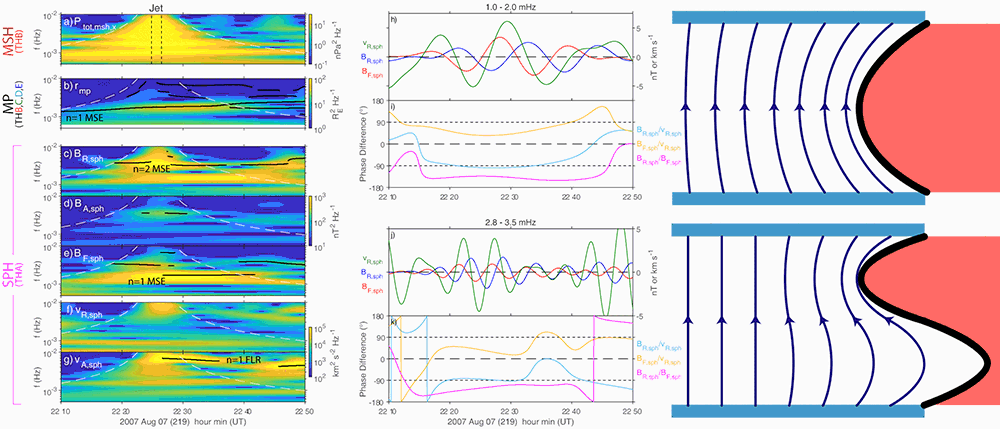MIST
Magnetosphere, Ionosphere and Solar-Terrestrial
The magnetopause booms like a drum due to impulses
by Martin Archer (Queen Mary University of London)
The abrupt boundary between a magnetosphere and the surrounding plasma, the magnetopause, has long been known to support surface waves which travel down the flanks. However, just like a stone thrown in a pond causes ripples which spread out in all directions, impulses acting on our magnetopause should also cause waves to travel towards the magnetic poles. It had been proposed that the ionosphere might result in a trapping of surface wave energy on the dayside as a standing wave or eigenmode of the magnetopause surface. This mechanism should act as a global source of magnetopause dynamics and ultra-low frequency waves that might then drive radiation belt and auroral interactions.
While many potential impulsive drivers are known, no direct observational evidence of this process had been found to date and searches for indirect evidence had proven inconclusive, casting doubt on the theory. However, Archer et al. (2019) show using all five THEMIS spacecraft during their string-of-pearls phase that this mechanism does in fact occur.

Figure: THEMIS observations and a schematic of the magnetopause standing wave.
They present observations of a rare isolated fast plasma jet striking the magnetopause. This caused motion of the boundary and ultra-low frequency waves within the magnetosphere at well-defined frequencies. Through comparing the observations with the theoretical expectations for several possible mechanisms, they concluded that the jet excited the magnetopause surface eigenmode – like how hitting a drum once reveals the sounds of its normal modes.
Hear the signals as audible sound here: https://www.youtube.com/watch?v=mcG03NBJf-s
For more information please see the paper below:
‘Direct Observations Of A Surface Eigenmode Of The Dayside Magnetopause’. M.O. Archer, H. Hietala, M.D. Hartinger, F. Plaschke, V. Angelopoulos. Nature Communications. | https://doi.org/10.1038/s41467-018-08134-5